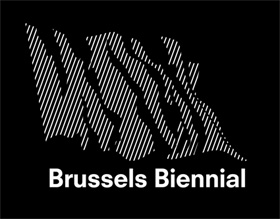 Previously: Brussels Biennial: Lufthansa Deportation Class.
Previously: Brussels Biennial: Lufthansa Deportation Class.
Why a biennial in Brussels in 2008? Lazy answer: because every country has an art biennial so why shouldn’t Belgium have one?
Lengthier answer:
The a first reason is geographical: Brussels is positioned in the deeply urbanized region encompassing a large part of North-Western Europe which Rem Koolhaas calls the Hollocore.
As AMO explains: While Europe was once the birthplace of the metropolis, the future of the modern city is now being defined in the developing world. (…) Where the cities in the developing world explode into bigger, less containable metropolitan areas, urban Europe is in a state of entropy. No longer energized by growth, cities and towns drift off into a muddle of provincial sameness, leaving an urban vacuum. But, of course, modernity abhors a vacuum, and an infinite multiplicity of new forms of urbanity emerges to take the place of what has become redundant.
The HOLLOCORE© is emblematic of Europe’s new urbanity — the amorphous super-region that links Brussels, Amsterdam, and the Ruhr Valley is urban Europe’s non-event: it houses 32 Million inhabitants or 9% of Europe’s population, yet has no city larger than one million inhabitants. Two thirds of its population lives in cities smaller then 200,000 inhabitants — in places no one has ever heard of.
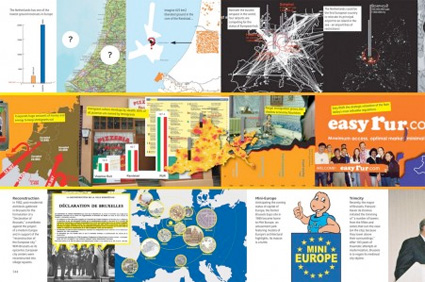 Image AMO
Image AMO
This contemporary urban landscape is a territorial metaphor of the European project: with no dominant cultural identity, devoid of a major city center and with no overarching governance.
A second motivation for the event is the birthday of Brussels Expo ’58, which closed its doors almost exactly 50 years before the Brussels Biennial opened. For many people the Expo ’58 introduced the notion of ‘modernity.’
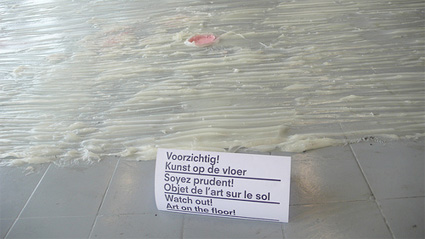
Despite all its claims to be a truly multi-cultural and international city, Brussels cannot abstract itself from the national context. Which brings me to the third reason for the Biennial: as with all things Belgian, there is a political purpose (the event is “An initiative of the Flemish Community”). But that’s a long story that passionates only the most Belgians among us and i must admit that my inability to take a clear stand puts me in the shoes of a second-class Belgian.
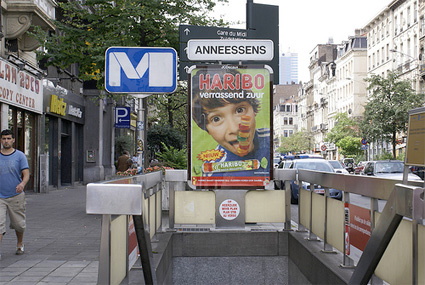 Anneessens (premetrostation). Photo © 2008 Tine Claerhout
Anneessens (premetrostation). Photo © 2008 Tine Claerhout
The two main venues for the Biennale ‘re-use’ modernity. One is the ex-Post Sorting Centre which re-opened exclusively for the Biennial. The second one was a depressing corridor inside the Anneessens metro station. I might seen to grumble and snivel but i actually liked that biennial a lot. It was surprising, bold and intelligent if a little bit too much on the shambles side.
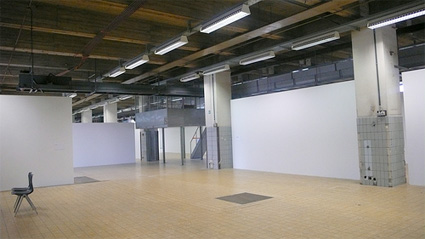
The start of my visit was fairly bleak. The first exhibition i saw at the ex-Post Sorting Centre was Once is Nothing, made of ‘physically absent’ artworks. Not that this would put me off, i managed to enjoy the Sao Paulo Biennial after all. Once is Nothing is based on a previous show, ‘Individual Systems’ part of the 2003 edition of the Venice Biennale . Devoid of any art piece, the room is nevertheless supposed to be ‘full of memories and history.’ The exhibition is a pertinent comment on the impossibility to replicate exactly one exhibition and on the pointless demand for innovation that characterizes most art biennials.
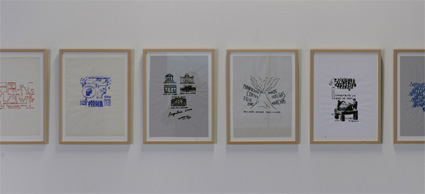 Taller Popular de Serigrafía – photo ©2008 Manfred Jade
Taller Popular de Serigrafía – photo ©2008 Manfred Jade
Things got seriously interesting further on with the Taller Popular de Serigrafia (Popular Silkscreen Workshop), a collective of artists and designers born with the protest movements in the wake of Argentina’s economic collapse of December 2001. TPS is part of a long history weaving political activism and graphic arts in Latin America (the collective’s name is inspired by the early 20th century Taller de Gráfica Popular in Mexico).
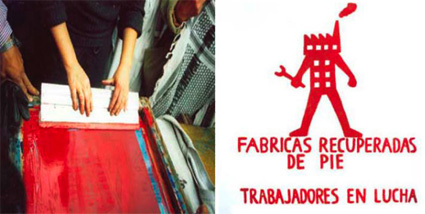 Image bola de nieve
Image bola de nieve
TPS uses silk-screen printing as an affordable type of art to react quickly to political events and collaborate with different social movements. While they take part in acts and demonstrations they draw images on the clothes of the street protesters, create billboards, murals, posters and leaflets. Not only does TPS turn their works into an instrument of social struggle, they also make an act of creativity out of their protests as their creations are preserved after their original use and collected outside of the revolutionary context.
The designs are usually simple, monochrome and direct. Their drawings, diagrams and occasionally photographic images often culture jam the logos and colors of soccer clubs or of other political propaganda.
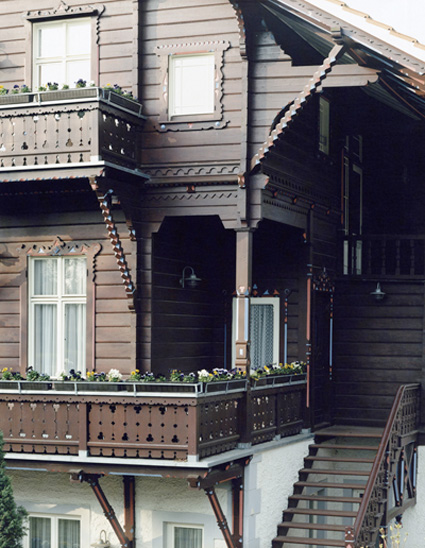 Ferienhaus, Heringsdorf, Maxim Gorkistrasse, Wolgaster Holzindustrie Aktiengesellschaft, 1900, Courtesy Johann König, Berlin
Ferienhaus, Heringsdorf, Maxim Gorkistrasse, Wolgaster Holzindustrie Aktiengesellschaft, 1900, Courtesy Johann König, Berlin
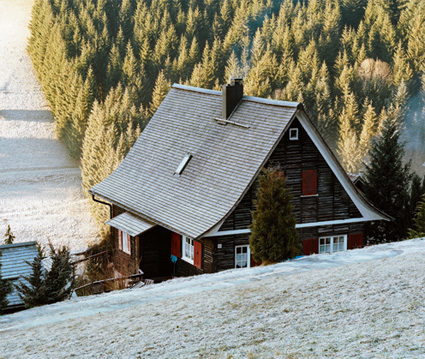 Annette Kelm, Prefabricated House, Reinerzau, 2008. Courtesy Marc Foxx, Los Angeles and Johann König, Berlin
Annette Kelm, Prefabricated House, Reinerzau, 2008. Courtesy Marc Foxx, Los Angeles and Johann König, Berlin
Annette Kelm‘s series Prefabricated Houses investigates the history of prefab houses, as developed from the late 19th century to the 1930s in Germany. The clichéd ‘Swiss’ chalets and ‘Swedish’ villas were designed by different architects and mass produced by factories during a time of housing shortage. The houses were affordable and could be dismantled without too much time nor effort. Intrigued by the high level of ornamentation displayed on each house, Kelm’s photographs reveal a transition of industry and craft, functionality and fashion. By bringing together the notion of ready-made sculpture with the utopian ideals of modernist architecture, perhaps Kelm is suggesting the changed, if not compromised, contemporary position of both (via.)
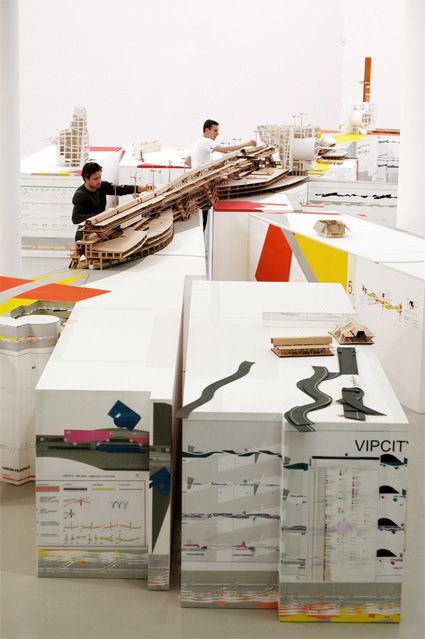 Luc Deleu, VIPCITY, 1999-2004. Photo © 2004 Clinckx
Luc Deleu, VIPCITY, 1999-2004. Photo © 2004 Clinckx
One of the most formidable works on show was the 18,5 m long scale-model ‘Vipcity’ by Luc Deleu. The architect and urbanist has been working on a half-visionary half-utopian concept of ‘Unadapted City’ for some 12 years. Since living on the planet earth has become problematic due to a lack of space, urban spaces ought to be used in a more polyvalent manner. Deleu accordingly proposes an interconnected building activity that pervades the entire city and is aimed at offering the greatest possible freedom to individual initiatives at the micro level. The proposed volumes are the result of a study of the necessary surface and infrastructure: an adequate number of cinemas have been planned, but they can also be used as sports hall, mushroom farm or accommodation for hamadryas baboons (no, i don’t know either what the baboons are doing here.)
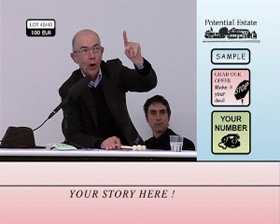 The Crying of Potential Estate is a film developed by Potential Estate from a scenario for a real-time auction. A story written by Potential Estate was cut up into 45 lots and put up for sale in January 2008. After a lot was read from an audio-booth, the bidding started.
The Crying of Potential Estate is a film developed by Potential Estate from a scenario for a real-time auction. A story written by Potential Estate was cut up into 45 lots and put up for sale in January 2008. After a lot was read from an audio-booth, the bidding started.
As the lots were sold a story gradually unfolded. The story is set partly in the village of Belgium, Wisconsin and features The Indian, the tiny economist and Wally Hope. Wally Hope refers to a man who became an icon of freedom in the mid-70ties. After the auction it emerges that The Crying of Potential Estate is also the mediated version of the above auction. It was screened live from a mini TV-studio Potential Estate had set up in the basement gallery. In fact all visitors present on the evening of the auction shift position from extras in the film to actors playing the role of accomplices to a long-drawn murder.
Potential Estate will offer the film The Crying of Potential Estate as a Gift to the Village of Belgium, WI (USA). The Gift, certified by an attorney at law, will be made possible by a number of private shareholders.
The Crying of Potential Estate – lot #5
There is much more to say about the Biennale, how i discovered the stunning work of Juliaan Schillemans and how i finally managed to see (and like) Letter to Leopold, Extra City‘s contribution to the Biennial.
See also Pierre Clemens’ video about the Brussels Biennial.
My flickr set.
The Brussels Biennial runs until January 4, 2009.
